Microbes in Household Products | Biology Class 12 - NEET PDF Download
Introduction to Microbes
- Microbes are microscopic organisms found everywhere—in soil, water, air, inside living organisms, and extreme environments (e.g., thermal vents at 100°C, deep soil, snowy layers, acidic conditions).
- Microbes, despite their microscopic size, are the most abundant and diverse forms of life on Earth. They play a crucial role in various ecosystems and can thrive in extreme environments where other organisms cannot survive.
There are several types of microbes, including:
- Protozoa: These are single-celled organisms that can be found in various habitats, including soil and water.
- Bacteria: These are single-celled organisms that can be found in almost every environment on Earth, including extreme conditions. Some bacteria are beneficial, while others can cause diseases.
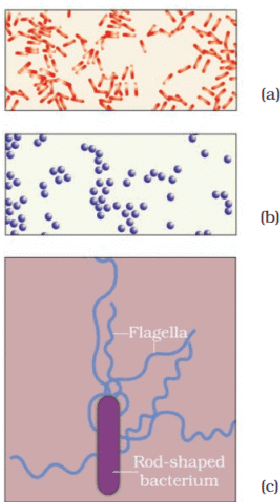 Bacteria: (a) Rod-shaped, magnified 1500X; (b) Spherical shaped, magnified 1500X; (c) A rodshaped bacterium showing flagella, magnified 50,000X
Bacteria: (a) Rod-shaped, magnified 1500X; (b) Spherical shaped, magnified 1500X; (c) A rodshaped bacterium showing flagella, magnified 50,000X
- Fungi: These organisms play a crucial role in decomposition and nutrient cycling. Some fungi can be harmful, but many are beneficial to humans.
- Viruses: These are microscopic agents that can infect living organisms. Some viruses can cause diseases, while others can be beneficial.
 Viruses: (a) A bacteriophage; (b) Adenovirus which causes respiratory infections; (c) Rod-shaped Tobacco Mosaic Virus (TMV). Magnified about 1,00,000–1,50,000X
Viruses: (a) A bacteriophage; (b) Adenovirus which causes respiratory infections; (c) Rod-shaped Tobacco Mosaic Virus (TMV). Magnified about 1,00,000–1,50,000X
- Viroids: These are small infectious agents that consist of RNA and can cause diseases in plants.
- Prions: These are infectious agents composed of protein that can cause diseases in animals and humans.
Microorganisms, such as bacteria and certain fungi, can be grown on nutrient-rich media, leading to the development of visible colonies. These cultures, which are visible to the naked eye, are useful for studying microorganisms.
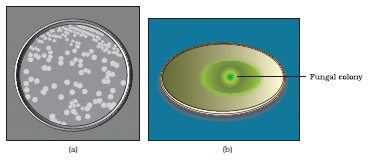 (a) Colonies of bacteria growing in a petri dish; (b) Fungal colony growing in a petri dish
(a) Colonies of bacteria growing in a petri dish; (b) Fungal colony growing in a petri dish
Some microbes can cause diseases in humans, animals, and plants. However, it is important to understand that not all microbes are harmful. In fact, many microbes are beneficial to humans in various ways. This chapter will explore some of the most important ways in which microbes contribute to human welfare.
Microbes in Houeshold Products
Microorganisms, often referred to as microbes, play a crucial role in various household products that we use daily. These tiny living organisms are involved in the fermentation process, which is essential for producing a wide range of items. Here are some examples of how microbes are used in household products:
(i) Microbes in Curd Production
- Curd is made from milk through the action of lactic acid bacteria (LAB), such as Lactobacillus. These bacteria grow in milk and convert it into curd by producing acids that coagulate and partially digest the milk proteins.
- When a small amount of curd is added to fresh milk as a starter, it contains millions of LAB that multiply at suitable temperatures, transforming milk into curd. This process also enhances the nutritional quality of the curd by increasing its vitamin B12 content.
- LAB also play a beneficial role in our stomachs by helping to control disease-causing microbes.
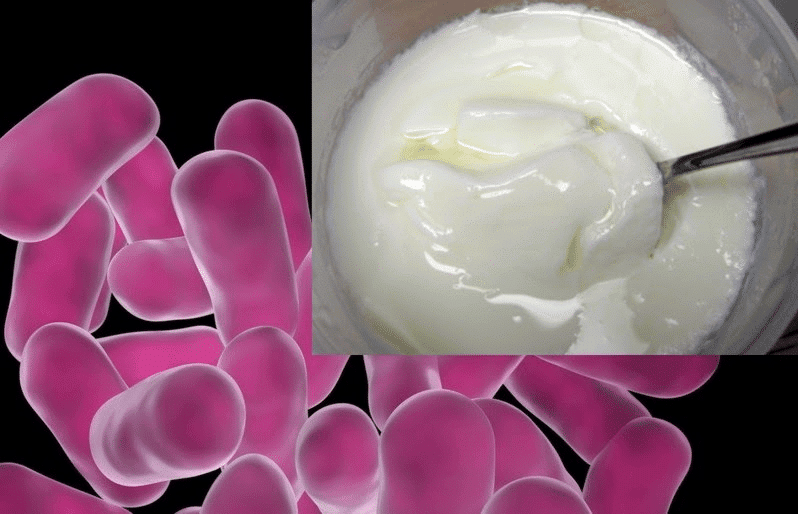
(ii) Microbes in Fermented Foods
- Dough for Dosa and Idli: The dough used for making dosa and idli is fermented by bacteria, which produce carbon dioxide (CO2) gas during the fermentation process. This CO2 production is responsible for the puffed-up appearance of the dough. The metabolic pathway involved in CO2 formation is likely fermentation, where sugars are converted into acids, gases, or alcohol. The bacteria used for these fermentations typically come from the environment, as they are naturally present in air, soil, and on surfaces.
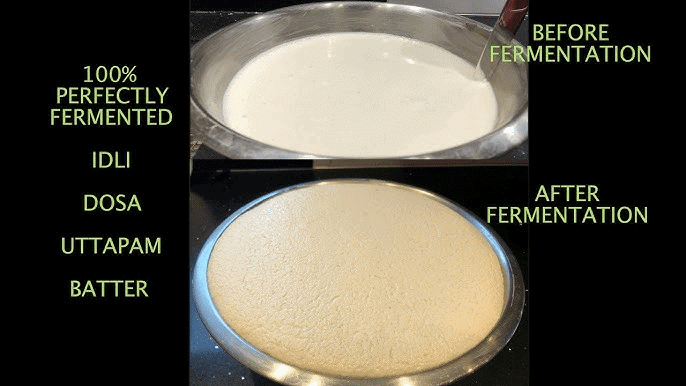 Fermented Dough for Dosa and Idli
Fermented Dough for Dosa and Idli
- Dough for Bread: Baker’s yeast, scientifically known as Saccharomyces cerevisiae, is used to ferment the dough for making bread. This yeast ferments the sugars in the dough, producing carbon dioxide and alcohol, which causes the dough to rise.
- Traditional Drinks and Foods: Fermentation by microbes is also used to make traditional drinks like toddy, which is produced by fermenting sap from palms in some parts of southern India.
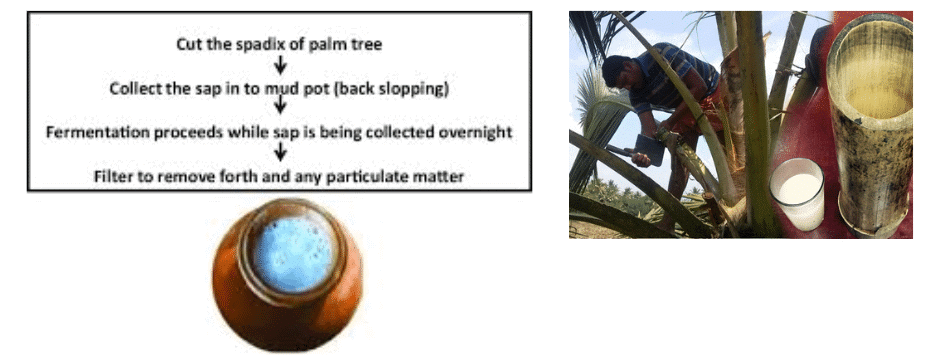 Toddy Production
Toddy Production
- Fermentation is also used to make foods like fish, soybean, and bamboo shoots.
(iii) Microbes in Cheese Production
- Cheese is one of the oldest food items produced using microbes. Different varieties of cheese are known for their unique texture, flavor, and taste, which come from the specific microbes used in their production.
- For example, the large holes in Swiss cheese are caused by the production of a significant amount of CO2 by a bacterium called Propionibacterium sharmanii. Roquefort cheese is ripened by growing a specific fungus on it, which imparts a distinctive flavor to the cheese.
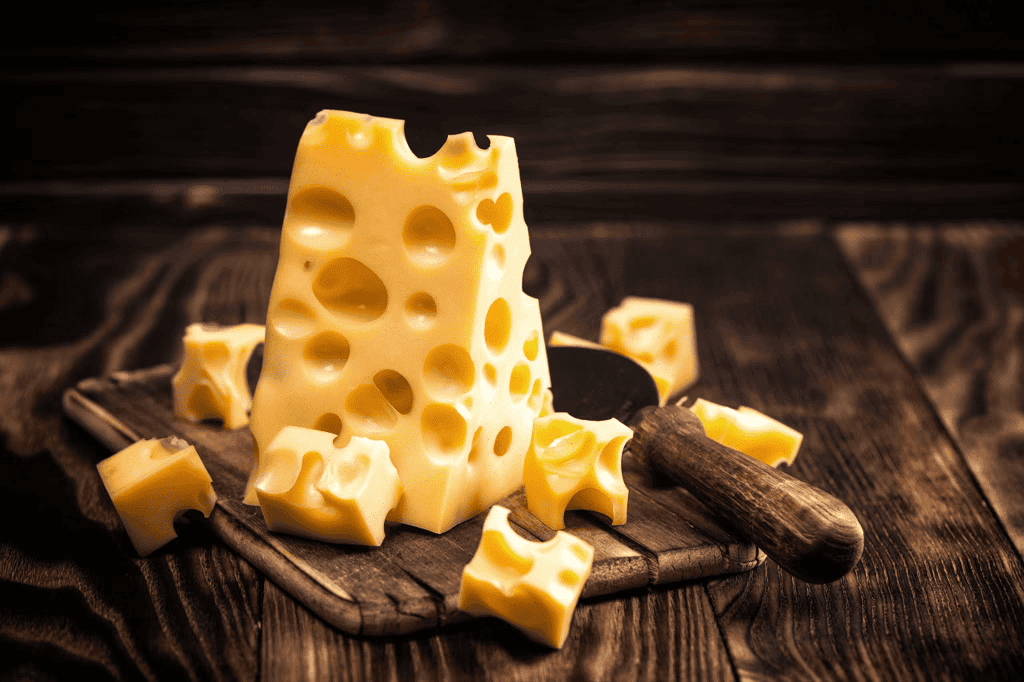 Swiss Cheese
Swiss Cheese
|
59 videos|290 docs|168 tests
|
FAQs on Microbes in Household Products - Biology Class 12 - NEET
| 1. What are microbes and why are they important? |  |
| 2. What are the main types of microbes? |  |
| 3. How are microbes used in household products? |  |
| 4. What are the contributions of microbes to human welfare? |  |
| 5. Can microbes be harmful to humans? |  |

















